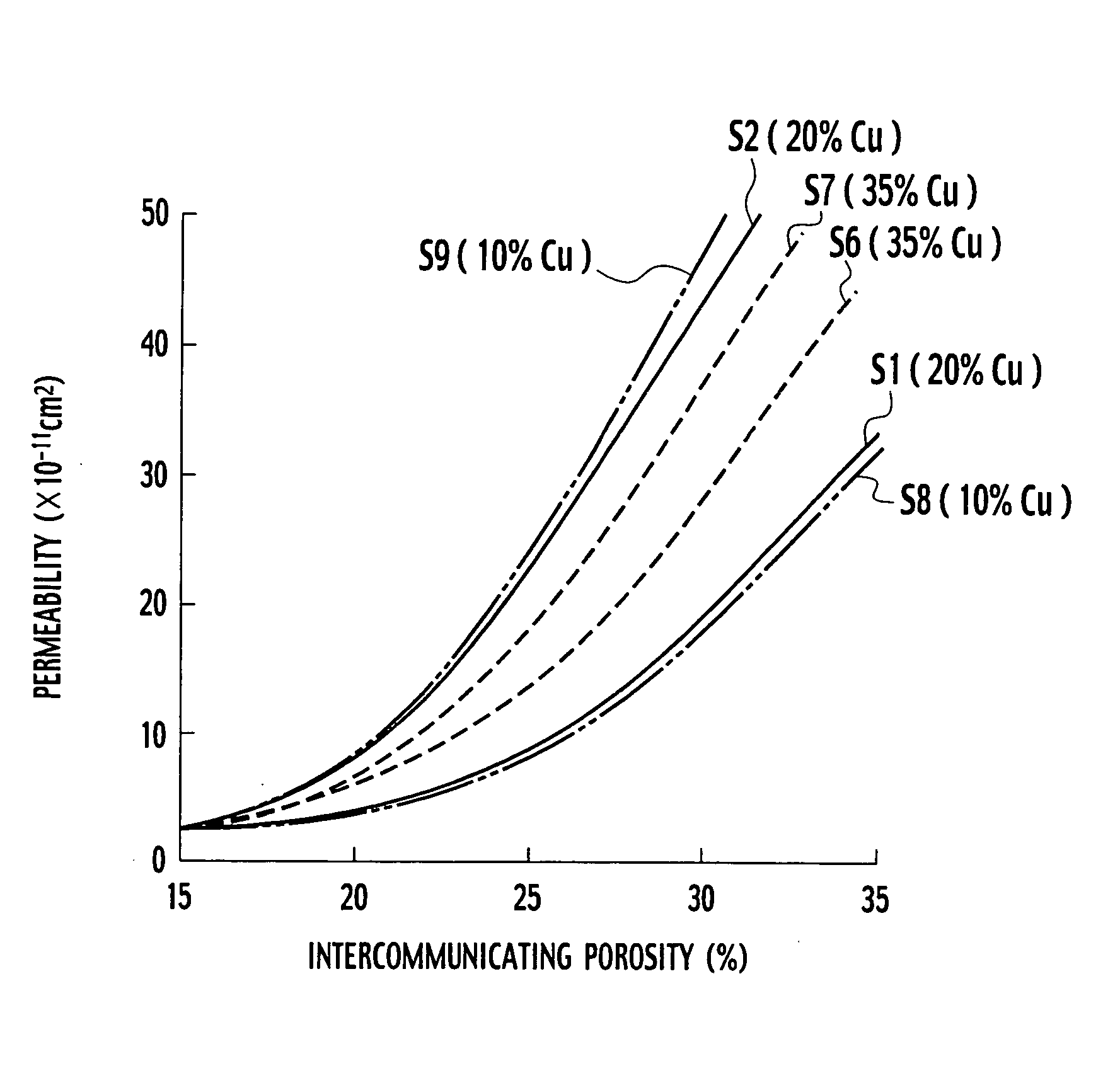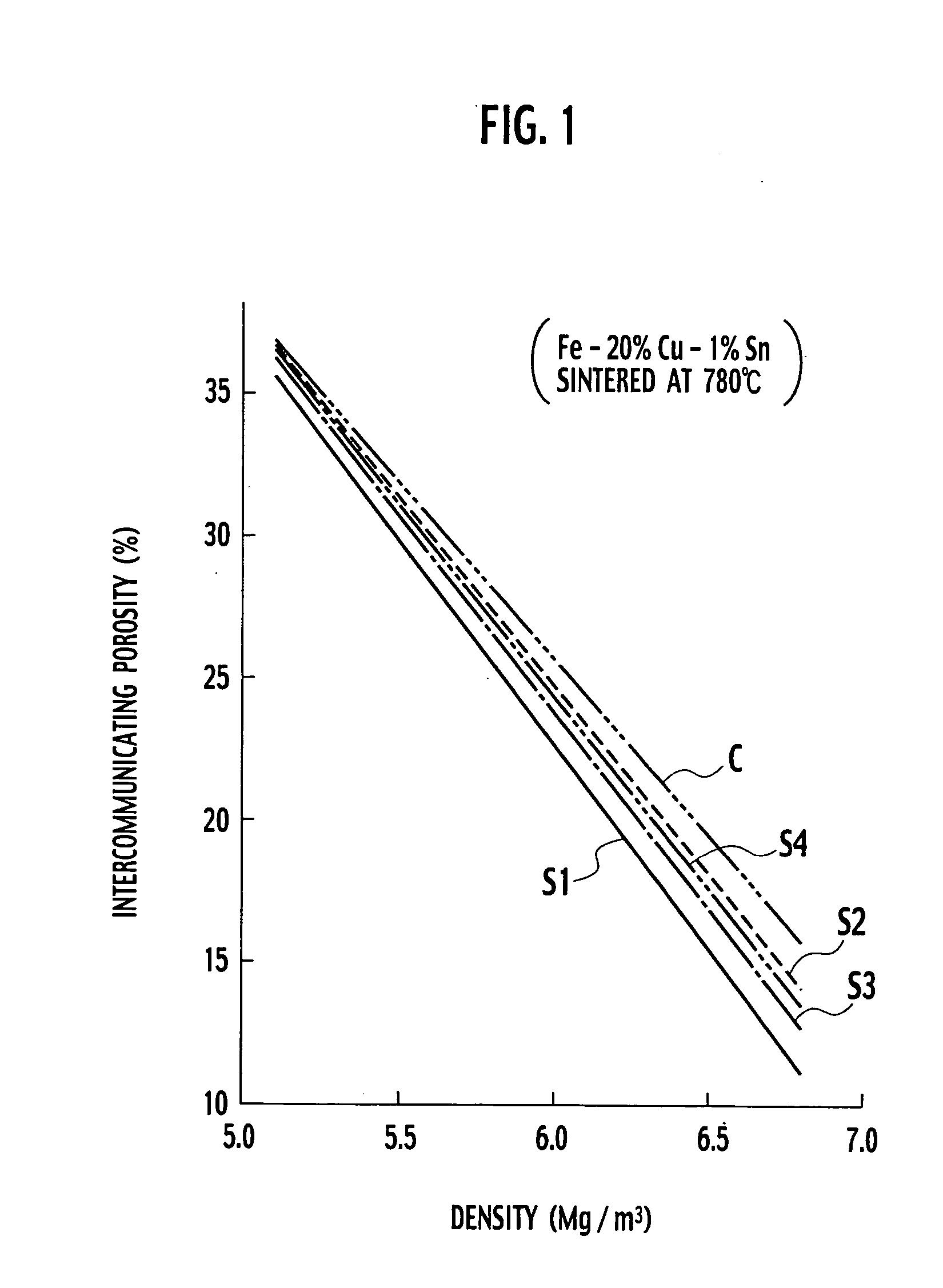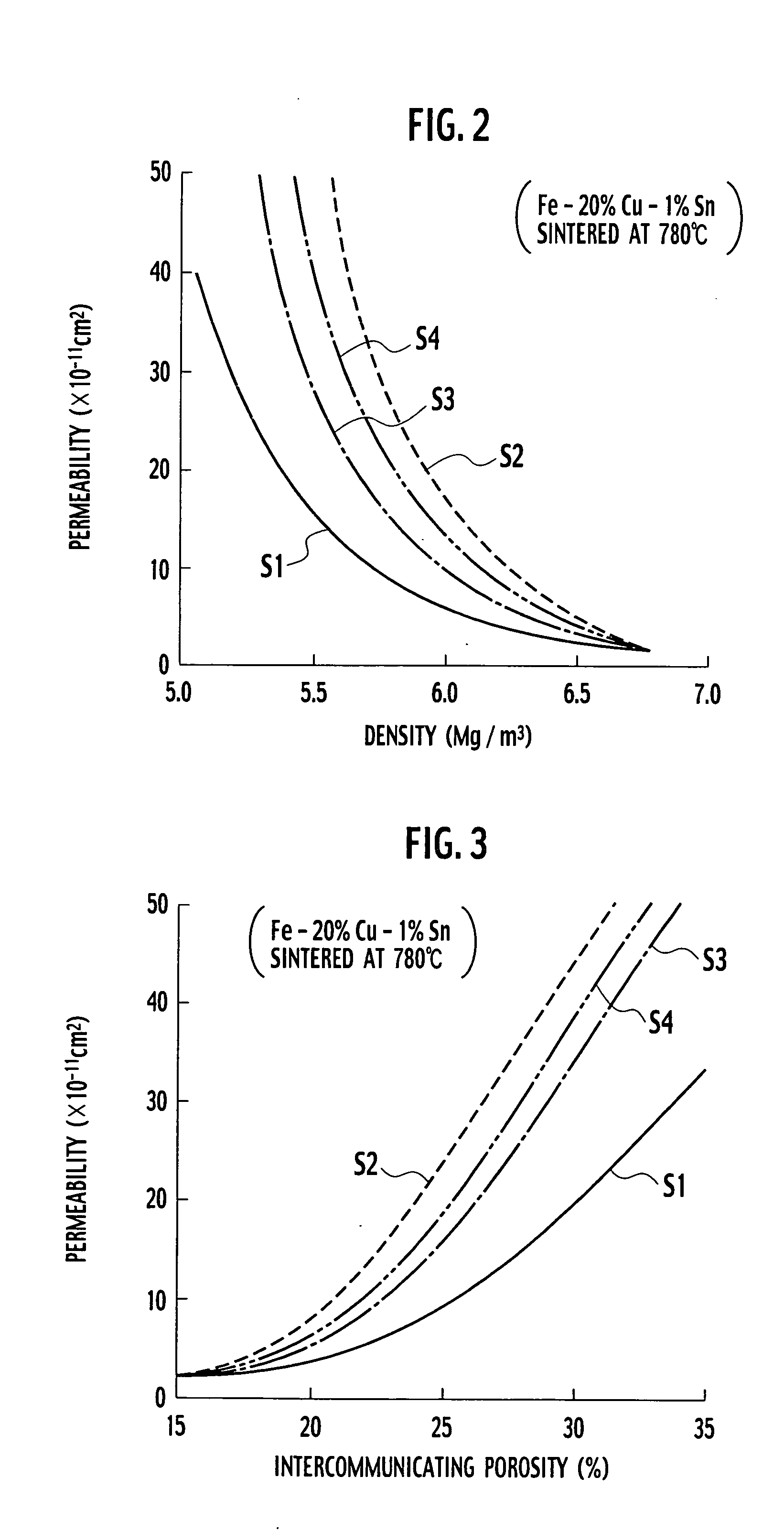Manufacturing processes of sintered alloy and oil-impregnated sintered bearing
a technology of oil-impregnated bearings and manufacturing processes, which is applied in the direction of shafts, bearings, rotary machine parts, etc., can solve the problems of generating probability, not advantageous from the standpoint of durability, and generating noises for bearings used in cold districts. to achieve the effect of reliable durability
- Summary
- Abstract
- Description
- Claims
- Application Information
AI Technical Summary
Benefits of technology
Problems solved by technology
Method used
Image
Examples
example 1
In each of samples S1 to S4, a raw material iron powder, a raw material copper powder and a raw material tin powder were blended and in accordance with the whole composition of 20% Cu, 1% Sn and the balance Fe by mass, and zinc stearate as a powder lubricant was further added to the above powders at a ratio of 0.3% relative to the total mass to prepare a mixed powder. At this time, an electrolyzed copper powder (trade name: CE15) manufactured by Fukuda Metal Foil & Powder Co., Ltd. was used as the raw material copper powder. As the raw material iron powder, a reduced iron powder (trade name: NC100-24) manufactured by Hoganas AB of Sweden and a porous iron powder (trade name: LD80) manufactured by Hoeganas corporation were used, and they were blended at a proportion shown as described below. Sample: Contents of raw material iron powder S1: The porous iron powder of 100% by mass S2: The reduced iron powder of 100% by mass S3: The reduced iron powder of 50% by mass and the porous ...
example 2
The same operation as that for sample S1 of Example 1 was repeated, excepting that the blending ratios of the raw material powders were changed for shifting the whole composition of the sintered bearing to Fe-35% Cu-1.75% Sn (sample S6) or Fe-10% Cu-0.5% Sn (sample S8), to prepare mixed powders of samples S6 and S8.
Moreover, the same operation as that for sample S2 of Example 1 was repeated, excepting that the blending ratios of the raw material powders was changed for shifting the whole composition of the sintered bearing to Fe-35% Cu-1.75% Sn (sample S7) or Fe-10% Cu-0.5% Sn (sample S9), to prepare mixed powders of samples S7 and S9.
Using each of the above-mentioned mixed powders, a plural number of sintered compacts each having a different density were prepared by every sample in the same manner as in Example 1. The permeability and the intercommunicating porosity were similarly measured. Using the results of measurement, the relationship between the density and the permeabi...
example 3
The same operation as that for sample S1 of Example 1 was repeated, excepting that 25% by mass of the electrolyzed copper powder used as a raw material iron powder was replaced with the same amount of a powder of copper foil (trade name: Cu—S-100) manufactured by Fukuda Metal Foil & Powder Co., Ltd., to prepare a mixed powder. Using this powder, a plural number of sintered compacts having a different density were similarly prepared. The permeability and intercommunicating porosity of each of the sintered compacts were measured and the relationship between the intercommunicating porosity and the permeability of the sintered compacts was prepared. The result is shown in FIG. 9 together with the result of sample 1 of Example 1.
According to FIG. 9, it can be understood that use of the powder of copper foil is effective for decreasing the permeability of the sintered compact. This is considered because the spaces which the copper powder occupies between the iron particles in green com...
PUM
| Property | Measurement | Unit |
|---|---|---|
| specific surface area | aaaaa | aaaaa |
| particle size | aaaaa | aaaaa |
| kinematic viscosity | aaaaa | aaaaa |
Abstract
Description
Claims
Application Information
 Login to View More
Login to View More - R&D
- Intellectual Property
- Life Sciences
- Materials
- Tech Scout
- Unparalleled Data Quality
- Higher Quality Content
- 60% Fewer Hallucinations
Browse by: Latest US Patents, China's latest patents, Technical Efficacy Thesaurus, Application Domain, Technology Topic, Popular Technical Reports.
© 2025 PatSnap. All rights reserved.Legal|Privacy policy|Modern Slavery Act Transparency Statement|Sitemap|About US| Contact US: help@patsnap.com



